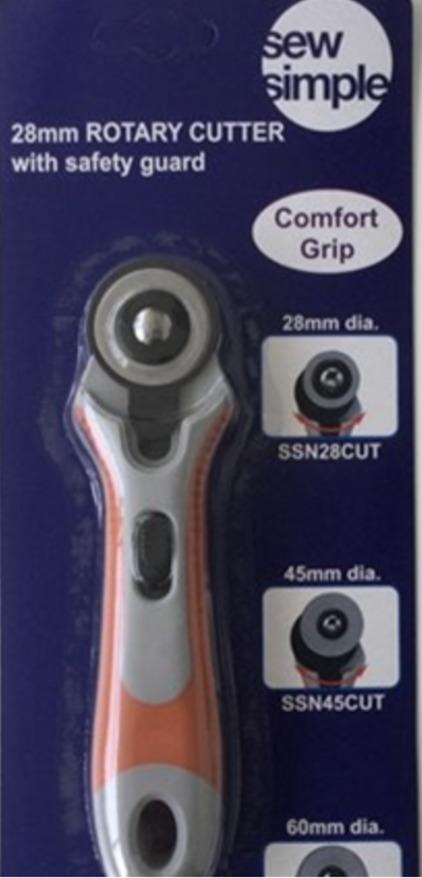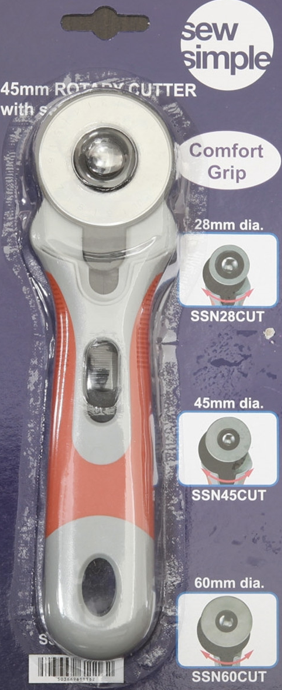10 Essential Quilting Tools for Beginners: Getting Started with Confidence
Posted by passion4quilting.com on 2nd Jan 2025
10 Essential Quilting Tools for Beginners: Getting Started with Confidence
Introduction:
Welcome to the world of quilting! Whether you're a seasoned crafty person or just starting out, quilting can be an incredibly rewarding hobby. From creating cozy blankets to making stunning works of art, quilting allows you to express your creativity while also producing something truly special.
However, as with any new skill, getting started can seem daunting. What tools do you need? Where do you begin? Don't worry – we've got you covered! In this article, we'll take a closer look at the 10 essential quilting tools every beginner needs to get started with confidence.
Tool #1: Sewing Machine
A sewing machine is an absolute must-have for any quilter. While it's tempting to start with hand-stitching, investing in a good quality sewing machine will make your life so much easier and allow you to work more efficiently.
When choosing a sewing machine, consider the following factors:
* Your budget: Sewing machines can range from under £100 to over £1,000.
* The type of fabric you'll be working with most often: If you're primarily working with cotton or other thin fabrics, a basic mechanical machine may suffice. However, if you plan on quilting with thicker fabrics like wool or denim, look for a machine with more power and features.
* Any special features you need: Some machines come with built-in walking feet, automatic threading, or adjustable stitch lengths.
Tool #2: Rotary Cutter
A rotary cutter is an essential tool for any quilter. It allows you to cut out fabric quickly and accurately, saving you time and effort in the long run.


When choosing a rotary cutter, consider the following factors:
* The size of your projects: A larger rotary cutter may be necessary if you're working on large quilts or need to cut multiple pieces at once.
* Your personal preference for comfort: Look for ergonomic handles that fit comfortably in your hand.
* The type of cutting mat you'll use with it: Make sure the rotary cutter is compatible with a self-healing cutting mat.
Tool #3: Cutting & Rotary Mat
A rotary mat is an essential tool for any quilter. It protects your work surface from damage and provides a smooth, even surface for cutting.
When choosing a cutting & rotary mat, consider the following factors:
* The size of your projects: A larger rotary mat may be necessary if you're working on large quilts or need to cut multiple pieces at once.
* Your personal preference for comfort: Look for mats with ergonomic grips and comfortable handles.
* Any special features you need: Some mats come with built-in rulers, protractors, or storage compartments.
* Mats 35 x 23 inches allow you to cut fabric width straight off the bolt.
* Consider if you work in inches or centimetres some mats have different scaled on each side.
Tool #4: Ruler
A ruler is a basic but essential tool for any quilter. It allows you to measure your fabric accurately and ensure that your cuts are precise.
When choosing a ruler, consider the following factors:
* The size of your projects: A longer ruler may be necessary if you're working on large quilts or need to measure multiple pieces at once.
* Your personal preference for comfort: Look for rulers with ergonomic grips and comfortable handles.
* Any special features you need: Some rulers come with built-in protractors, curves, or measuring tapes. Add a 1/4 rulers are great when you are doing foundation paper piecing.

Tool #5: Iron, Ironing Board and Pressing Mat
An iron and ironing board are must-haves for any quilter. They allow you to press your seams flat and ensure that your fabric lies smoothly.
When choosing an iron and ironing board, pressing mat consider the following factors:
* The type of fabric you'll be working with most often: If you're primarily working with cotton or other thin fabrics, a basic iron may suffice. However, if you plan on quilting with thicker fabrics like wool or denim, look for an iron with more power and features like steam.
* Your personal preference for comfort: Look for irons with ergonomic handles and comfortable grips.
* Felted wool pressing mats are a great base that absorbs steam, pins and stitches and embroidery with ease
Tool #6: Sewing Needles
Sewing needles are another essential tool for any quilter. They come in a variety of types and sizes, each designed for specific tasks.
When choosing sewing needles, consider the following factors:
* The type of fabric you'll be working with most often: Different fabrics require different types of needles.
* Your personal preference for comfort: Look for needles with comfortable grips and smooth threading.
*The weight of thread that you will be using 20, 30, 40, 50, 60wt The thicker thread is 20 and the thinner thread is 60.
Tool #7: Thread
Thread is an essential tool for any quilter. It allows you to join your pieces together and create a cohesive design.
When choosing thread, consider the following factors:
* The type of fabric you'll be working with most often: Different fabrics require different types of thread. 100percent cotton 50wt
* Your personal preference for colour and texture: Look for threads in a variety of colours and textures that match your quilt's aesthetic.
**Tool #8: Quilting Gloves**
Quilting gloves are an essential tool for any quilter. They provide grip, comfort, and protection for your hands while working on delicate fabrics.
When choosing quilting gloves, consider the following factors:
* The type of fabric you'll be working with most often: Different fabrics require different types of gloves.
* Your personal preference for comfort: Look for gloves with ergonomic grips and comfortable palms.
**Tool #9: Quilting Scissors**
Quilting scissors are an essential tool for any quilter. They provide a precise cut and help to prevent fabric from fraying or distorting, Kay Buckley have a micro serrated blade.
When choosing quilting scissors, consider the following factors:
* The type of fabric you'll be working with most often: Different fabrics require different types of scissors.
* Your personal preference for comfort: Look for scissors with ergonomic handles and comfortable grips.
**Tool #10: Quilting Project Bag**
A quilting project bag is an essential tool for any quilter. It provides a convenient way to transport your projects, keeping them organized and protected from damage.
When choosing a quilting project bag, consider the following factors:
* The size of your projects: A larger bag may be necessary if you're working on large quilts or need to carry multiple pieces at once.
* Your personal preference for comfort: Look for bags with ergonomic handles and comfortable straps.
* Any special features you need: Some bags come with built-in rulers, protractors, or storage compartments.
**Conclusion:**
Getting started with quilting can be intimidating, but with the right tools, you'll be well on your way to creating beautiful quilts that bring joy and warmth to those who use them. Remember, it's not just about the tools – it's about the passion and creativity that goes into each project.
**Final Tips:**
* Practice regularly to improve your skills and build confidence.
* Invest in good quality tools that will last for years to come.
* Don't be afraid to experiment and try new things!
* Join a quilting community or online forum to connect with other quilters, share tips and tricks, and learn from their experiences.


